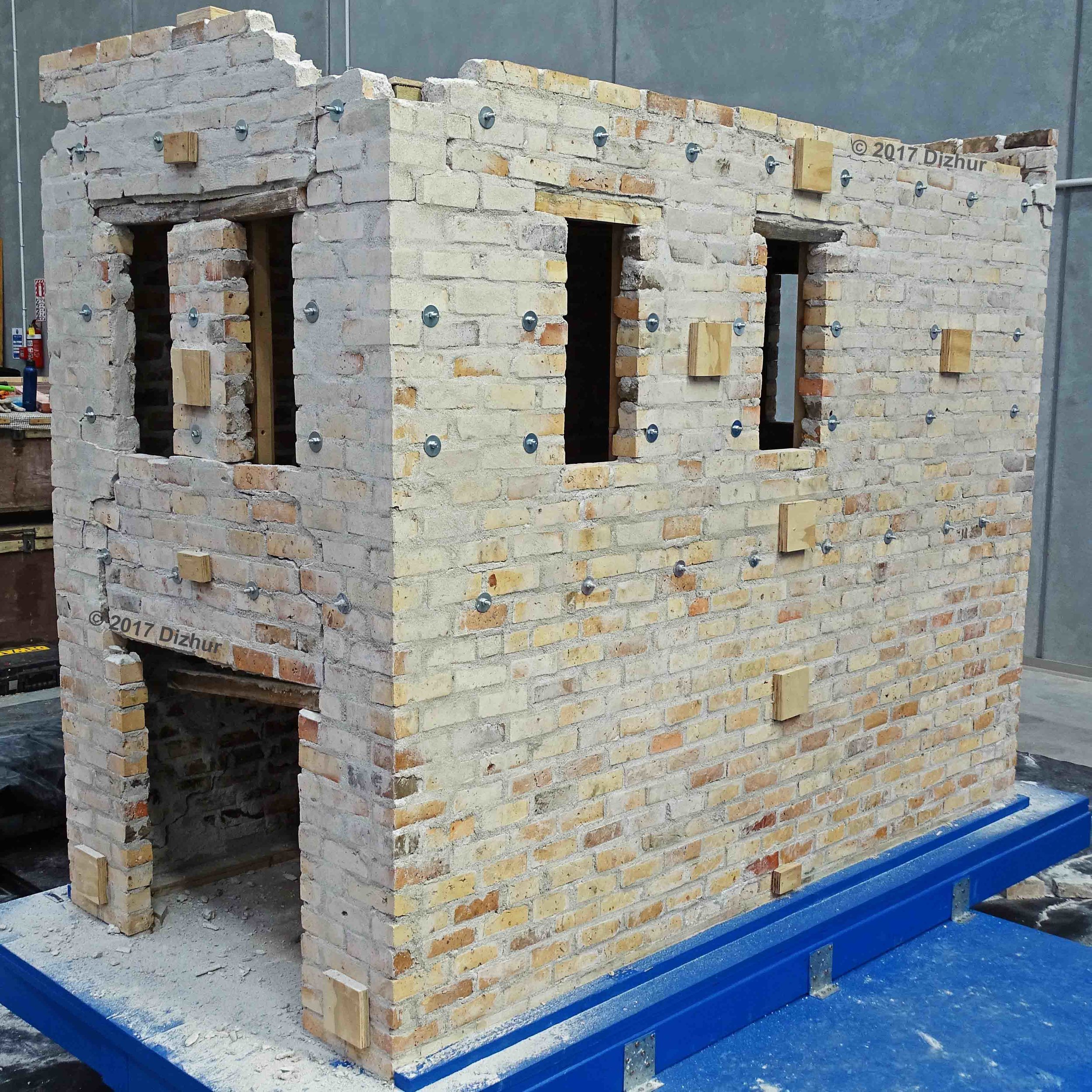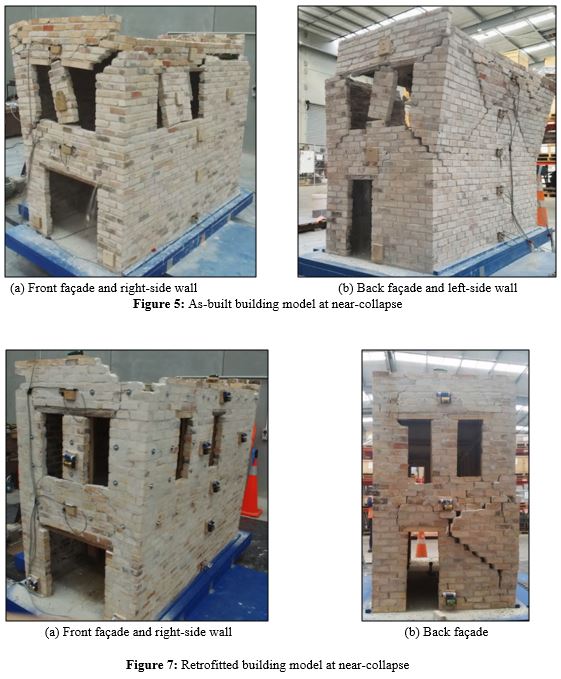Experimental earthquake response of two-storey scaled URM buildings
11th Structural Analysis of Historical Constructions, cusco
Scope and methodology
Shake-table tests of two quarter-scaled clay-brick URM building models, one in as-built conditions with wall-to-diaphragm anchorages and the second one in retrofit conditions.
Two different levels of strengthening were investigated: (i) simple wall-to-diaphragm connections, (ii) additional vertical strong-backs installed on the top floor wall interior surface and moment-resisting frames placed at the ground floor.
FINDINGS
The testing realistically reproduced classic failure mechanisms including two-way bending, in-plane diagonal cracking, and rocking at the base of the piers observed during post-earthquake field observations.
Strong torsional behaviour was exhibited at all stages of testing, as a result of the structural asymmetry (openings).
The retrofitted model showed high resilience and was still standing at a 61% higher acceleration than the as-built model.
The retrofitted model resisted four times the number of cycles sustained by the as-built one.
The moment-resisting frames prevented the building from toppling despite rocking of ground floor in-plane piers was observed. Shear wall significantly limited the rocking of the top-storey piers restraining them from collapse. The timber strong-backs prevented two-way bending of the top-storey walls. The simple bolted wall-to-diaphragm connections prevented catastrophic failure at low accelerations.



